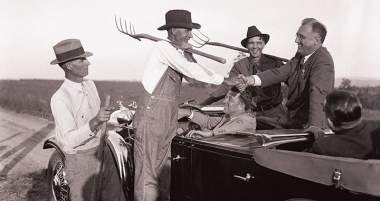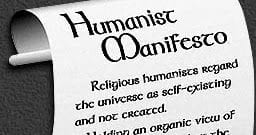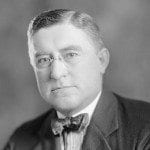“Curiously enough,” wrote John T. Flynn in his 1948 classic The Roosevelt Myth, “while [Franklin Roosevelt’s Secretary of Agriculture Henry] Wallace was paying out hundreds of millions to kill millions of hogs, burn oats, plow under cotton, the Department of Agriculture issued a bulletin telling the nation that the great problem of our time was our failure to produce enough food to provide the people with a mere subsistence diet.” (Emphasis added.)
Today, Americans have endured a government-imposed lockdown of the U.S. economy, which has, in a matter of weeks, transformed a booming economy — with the lowest unemployment rate in half a century — into one with about 35 million Americans unemployed and talk of potential shortages of food. But our present situation is not the first time in our nation’s history that the government has been the instigator of intentional deprivation of its citizens.
As Flynn described it, there was a time in our nation’s history when it was official government policy to destroy both crops and livestock, at a time when many Americans faced serious malnutrition, if not outright starvation.
The Roosevelt farm policy during the dark days of the Great Depression was based upon the idea that government should control prices. Ordinarily, governments have resorted to forcing producers to accept less compensation for their work (in order to gain favor with voters), but the New Deal of President Franklin D. Roosevelt rested on the proposition that government should, in effect, force consumers to pay more. Either way, the end result is, as limited government advocate Tom Anderson said in the introduction to Dan P. Van Gorder’s book Ill Fares the Land: The Famine Planned for America, not good. Rather, as Anderson bluntly put it, “Price control is people control.”
In the decade before Roosevelt told the American people that the destruction of crops and livestock would be good for the country — because it was supposedly to help the nation’s farmers — President Calvin Coolidge had to veto the McNary-Haugen bill. Written by Senator Charles McNary of Oregon and Representative Gilbert Haugen of Iowa, it was a plan for farmers to sell their surpluses to the federal government, which would then attempt to dump those “surpluses” in foreign markets.
As is so often the case, the origin of the acute farm problems in the otherwise-booming 1920s was generated by government. When the World War broke out in Europe in 1914, the U.S. government encouraged the nation’s farmers to increase production for the European market. To do so, many farmers had increased their acreage and invested in machinery. For example, the number of acres used for wheat went from 48 million in 1914 to 75 million in 1919.
Of course, when peace came to Europe, millions of British, French, and German soldiers returned to their farms, resulting in the collapse of American farm exports from $4.1 billion in 1919 to $1.9 billion by 1922.
The McNary-Haugen bill proposed a Federal Farm Board that would purchase commodities at prices more in line with the prosperous years of 1909-1919, so as to prop up farm prices. The purchased commodities would then be sold abroad.
Coolidge Fights Against Government Price Controls
President Coolidge twice vetoed the legislation, arguing that the scheme would only encourage farmers to continue to increase production, which would in turn require more subsidies, and the problem would only be exacerbated. Besides that, Coolidge viewed the proposal as a violation of the Constitution.
Coolidge argued in his veto message that McNary-Haugen would create “a bureaucratic tyranny of unprecedented proportions.” Coolidge called the measure “cruelly deceptive,” in that “these provisions would disappoint the farmer by naively implying that the law of supply and demand can thus be legislatively distorted in his favor. Economic history is filled with the evidences of the ghastly futility of such attempts. Fiat prices match the folly of fiat money.”
He also warned that the bill would make America dependent on the actions of foreign governments. “To stake the future prosperity of American agriculture upon the course of action to be taken by foreign governments acting under such hostile impulses is altogether too hazardous.”
Despite Coolidge’s clear-headed analysis of the problems associated with government placing a “floor” under farm prices, the Roosevelt administration adopted the economically unsound plan found in McNary-Haugen, and added its own negative provisions in its New Deal legislation, the Agricultural Adjustment Act of 1933.
In between the Coolidge and Roosevelt presidencies was the presidency of Herbert Hoover. Hoover based his policies to deal with the Great Depression on the theory that high prices and high wages produce prosperity. For agriculture, he offered government subsidies to deal with falling farm prices, which only caused farmers to produce even more, resulting in an even more precipitous decline in prices.
Instead of learning from the failures of Hoover, Roosevelt basically became Hoover on steroids. As Rexford Tugwell, a top FDR advisor, admitted later, “Practically the whole New Deal was extrapolated from programs Hoover started.” Roosevelt adopted the same theory that “underconsumption” and “overproduction” had caused the Great Depression. This dubious theory — that if wages could be increased, prosperity would return — was the guiding ideology of the New Deal, necessitating government intervention into the American economy on a scale never seen before.
This was the philosophy that led to the creation of the American Agricultural Administration (AAA). Since it was believed that American farmers were overproducing, the government would pay farmers to cut back on production. This would, in turn, lead to a rise in farm prices. As a result of this policy, six million pigs were slaughtered, milk was poured onto the ground, and 10 million acres of cotton were plowed under — while millions of Americans were going hungry and suffering a shortage of proper clothing.
The idea was to raise prices to be in line with a time when farm prices were relatively high, 1909-1914. Under what was called “parity,” if the price of a farm product was a dollar then, and the cost of living had doubled, then the price should now be two dollars. Writing in Economics in One Lesson, Henry Hazlitt challenged this fallacious thinking. “A Chevrolet six-cylinder touring car cost $2,150 in 1912; an incomparably improved six-cylinder Chevrolet sedan cost $907 in 1942; adjusted for ‘parity’ on the same basis as farm products, however, it would have cost $3,720 in 1942.”
Actually, the way to increased prosperity is not through higher prices, but lower prices. Producers take in more money when they have more customers purchasing products at a lower price, rather than having fewer customers paying a higher price. For example, Henry Ford made more money selling lower-priced Model T’s than his competitors did selling higher-priced automobiles, because he sold more of them.
In short, the free market is best for both consumers and producers.
The New Deal Rejects the Free Market
Unfortunately, Roosevelt rejected a free-market solution for both industry and agriculture. As Flynn wrote in The Roosevelt Myth, his plan was “to take the whole industrial and agricultural life of the country under the wing of the government, organize it into vast farm and industrial cartels, as they were called in Germany, corporatives as they were called in Italy, and operate business and the farms under plans made and carried out under the supervision of the government.”
In fact, as Burton Folsom, Jr. wrote in New Deal or Raw Deal? How FDR’s Economic Legacy Has Damaged America, Roosevelt even envisioned an “international cartel in different commodities,” which FDR himself would organize in order to solve the problems of the world.
Van Gorder makes the case in his Ill Fared the Land that this globalist mind-set (or as it was then called, internationalist mind-set) of Roosevelt was a large part of the problem involved in the New Deal’s policies concerning agriculture. “American farmers were, by a stroke of evil genius, paid to permit their products to be removed from the market, while these products were being replaced by foreign imports.”
Van Gorder supported his argument with hard statistics, noting that between 1919 and 1938 the United States exported 530 million tons of fresh vegetables while importing 2,205 million tons. During the same years, the United States exported 10,139,000 tons of fresh fruits while importing 24,917,000 tons. And when six million little pigs were killed from 1928 to 1938 “to drive up prices for pork,” the United States imported 665 million pounds of beef, veal, pork, mutton, and lamb more than was exported.
In 1900, America produced 184 pounds of meat per capita, but by 1939, this had decreased to only 141 pounds per capita. “Despite the fact that the number of hogs on our farms has been steadily declining from an all-time peak of 970 to 1,000 of total population in 1872 to only 475 in 1932,” Van Gorder wrote, “Secretary Wallace buckled on his official armor in 1933 and set his face resolutely to do battle against the porcine host which threatened our nation.” When it was over, over six million pigs had been killed, not for food, but either for “fertilizer or inedible grease.”
Amazingly, while American farmers were being paid not to produce crops and livestock, the United States was importing some of those same goods! “The truth [was that],” Van Gorder wrote, “instead of so-called declining exports contributing to economy-crushing ‘burdensome surpluses’ of food, our increasing population took up the slack and actually decreased, the domestic supply.”
This madness leads one to question if the Roosevelt administration was simply incompetent. George Peek, who was Roosevelt’s first AAA administrator, offered some perspective in his book Why Quit Our Own? He wrote, “The major policies of agriculture and foreign trade are in charge of men who have never earned their livings in industry, commerce, finance or farming. Presenting facts to them is a sheer waste of time. They are long on theories but short on simple arithmetic.”
And what were their theories? “They deeply admire everything Russian.… To them Russia was the promised land and the sooner the United States became like Russia the better for everyone.”
Photo: AP Images
This article appears in the July 20, 2020, issue of The New American. To download the issue and continue reading this story, or to subscribe, click here.



